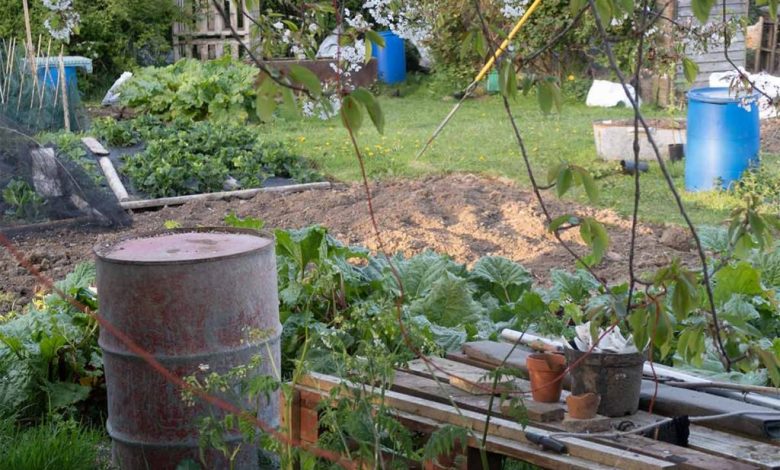Tips for Setting Up Your Own Urban Garden at Home

Do you dare to set up your own urban garden at home?
This is the definitive step to change our way of consuming and making it much more sustainable and ecological. One more step in that race to take care of our own and take better care of ourselves thanks to a healthier diet in which fruits, vegetables and vegetables prevail.
For this, nothing better than having them in our own home, on our terrace, our balcony or in our garden. But apart from some space, what else is needed to set up an urban garden at home?
We have consulted the professionals of Plantawa, a store of agricultural products and urban garden, so that they advise us and indicate the advice that we must take into account.
Have a little green corner at home and join the most ecological trend of the moment!
Why set up an urban garden?
Horticulture is a task that brings us many benefits, both physical and mental and, especially, economic.
A series of benefits that are interesting to weigh before getting down to work and deciding on how and where to set up a small orchard. Thus, among the main advantages of having a garden at home are:
- We will be able to eat fruits, vegetables and vegetables grown by ourselves, with more nutritional value. Some products from the garden are fresh and collected at their best moment, without camera, without pesticides and of those varieties and qualities that we like the most.
- It will help us reduce our stress and make us feel more relaxed and lively when experimenting and tending the garden and developing more patience and favoring concentration.
- It will also allow us to save money in the shopping cart.
How to set up our urban garden?
 If you have already encouraged yourself to grow your own vegetables at home, keep in mind that an urban garden will require some effort, but it will also constitute that little green corner in the urban environment. A space that will ingratiate us with our more ecological and rural side and will test our expertise as horticulturists and our patience.
If you have already encouraged yourself to grow your own vegetables at home, keep in mind that an urban garden will require some effort, but it will also constitute that little green corner in the urban environment. A space that will ingratiate us with our more ecological and rural side and will test our expertise as horticulturists and our patience.
In addition, with just a few basic notions we can plan which vegetables to plant in our garden and stock our pantry. But where do we start to set up a successful urban garden?
Choose well where to locate your garden
This is the first and fundamental step when starting to set up your own garden at home. Thus, depending on the amount of space we have, we can have a mini garden in planters on the windowsills, a vertical garden on a balcony or a small garden on a terrace or in a garden.
Light and orientation will also be two aspects to consider, so it is best to place the garden in an area facing south to enjoy the maximum number of hours of light, at least 6 hours, also protecting the plants from drafts.
What can you plant in your urban garden?
The seeds that you can plant in your urban garden can be seeds of spices, aromatic herbs, vegetables and vegetables. Thus, in your mini-garden you cannot miss parsley, basil, mint, rosemary, chives, peppers, tomatoes, carrots, cucumbers and aubergines, garlic, as well as lettuce, onions, mushrooms and courgettes.
If you have enough space you can also make room for pods and peas. And when it comes to fruit, you can grow strawberries, blueberries, raspberries, and blackberries.
When choosing the plants to include in our garden, we must consider that the part of the plant that remains above the ground is proportional to the part that is below it. For this reason, it is essential to always think about the dimensions that the plant can reach when it grows and leave the necessary space for its growth and development.
Horticultural specialists also advise us to opt for vegetables that are easy to grow if we are beginners. If this is your case, then it is better to decide to plant short-cycle crops that we can grow throughout most of the year.
Plants to consider include lettuce, radishes, garlic, onions, and Swiss chard. These types of crops also resist pests well and you just need to always have a planting calendar at hand to know when to plant and when to harvest.
Another aspect to take into account is how to associate the crops to get the most out of our garden. There are plants that help each other in their development, also protecting themselves against pests. Thus, we can plant celery next to parsley or lettuce next to tomatoes.
What tools will we need for our garden?
We will also need a series of tools and utensils to facilitate the tasks of sowing, care and harvesting in our urban garden. One of these objects are the identification signs to place in each plant area the name of the plant species, the planting date and even the care it requires.
We will also need planters, pots of different sizes, a watering can, a rake, a shovel, pruning shears, garden gloves and a water sprayer, among other objects.
How and when should we water?
Water is one of the key elements for the care and maintenance of our garden. The frequency of irrigation varies depending on the time of year and the type of crop, it being essential that we never flood the soil, as the plants can rot.
For this we will have to have a good system to drain.
It is interesting to irrigate with rainwater and always water at an ideal temperature for the plants.
Always check the quality of the soil and the type of substrate
It is important to choose the soil and the substrate based on the plants that we have in our garden. Different types of substrates are sold in specialized centers, from coconut fiber substrate, the most recommended for beginners, since they retain water and provide aeration to the substrate.
As an organic fertilizer, it is recommended to decide on pure earthworm humus, a substrate of great quality and purity. And, in the case of cold soils, the perlite or clay substrate is recommended.

![Photo of Sow Papaya: Conditions, Irrigation, Plantation [Step by Step + Images]](https://www.complete-gardening.com/wp-content/uploads/2022/08/sow-papaya-conditions-irrigation-plantation-step-by-step-images-390x220.jpg)


![Photo of Poisonous Plants: [The 10 Most Dangerous in the World]](https://www.complete-gardening.com/wp-content/uploads/2021/06/Plantas-venenosas-Sembrar100.com_-390x220.png)